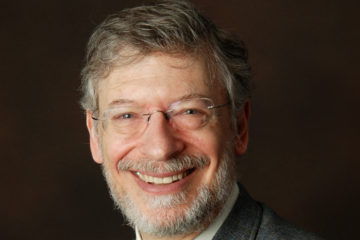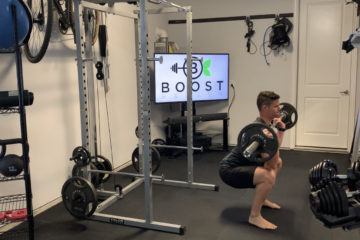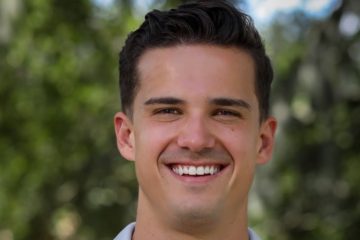
If you haven’t listened to part 1 of the show yet I would recommend listening to it first as you get to meet Tanner, Dallas, and Mike and hear their initial thoughts on endurance training and racing. As was the case in Part 1, I highly recommend you listen to the show for Part 2 as there was too much good stuff to capture in blog form. The links for the show on various platforms are below.
Finalizing the Reconciliation
The first question you get if you tell someone you dabble in triathlon is: “Have you done an Ironman?” Is this because we have to know how prestigious someone’s athletic status is, or is it just brilliant marketing by Ironman? Ironman is to triathlon what Bandaid is to bandage. It seems like it is assumed that if you are participating in triathlon, but haven’t done the long distance races, then you haven’t quite fully reached your potential. I think this is about as ridiculous as saying that Usain Bolt would be more impressive if he ran the mile versus the 100 meter race. The pure happiness, satisfaction, and pride that is on the faces of people that cross the finish line at an Ironman race is authentic and undeniable. That is inspiring. Maybe endurance is about overcoming something that is super challenging. Maybe the longer and more challenging the endurance event is, the more impressive it is. Maybe we just need a different name for sprint endurance race. Sprint endurance racing is an oxymoron anyway isn’t it?
What do you guys think?
To an endurance athlete, me wanting to just do fast short races probably seems wimpy or half-hearted. But if you bust your tail, they actually can be super challenging! The reality is, I probably won’t change minds of endurance athletes that my preference for short distance is okay or cool or respectable. Maybe someday I can be ok with that.
Gravel Cycling
Let’s move on to chat about gravel cycling. Gravel cycling has become extremely popular in recent years. According to a 2017 article on bicycleadventures.com, gravel bike sales are the fast growing category in bicycle sales.
Also more and more gravel races are popping around the world. I don’t currently own a gravel bike, and had heard such great things about gravel from these guys, that I wanted to buy one and keep it here in the US when we come home on summer holiday. Then Tanner suggested I borrow his gravel bike since he had switched his focus to road training for IM Wisconsin. This was incredibly kind and generous of him to let me borrow it for nearly 3 weeks! I quickly fell in love with hum of the tires rolling over the rocks and the serenity of being out on quiet country roads.
I had ridden gravel on my 29er mountain bike a bit, but this specially designed gravel bike made it much more enjoyable, adding speed, comfort, agility, and control.
Tanner, Dallas, and Mikey, along with a few other buddies that couldn’t join us today, participated in the famous Dirty Kanza this year! In case you are not familiar the Dirty Kanza (DK for short) is a world renowned gravel bike race here in Kansas. They have numerous distances to compete in, including 25, 50, 100, and 200 miles. The race is well known for its unknowns including weather and road conditions. Also for those of you who don’t know, Kansas isn’t flat, especially in the Flint Hills which the races cuts through. The DK is certainly famous in Kansas since it is located here, but I was surprised and pleased when I talked with my training buddies back in Hong Kong that the DK is actually quite well known globally in the cycling community. With the popularity, and unique style of this race, I thought it would be great have the guys share some of their favorite moments.
Dallas – He described the beginning of the DK 200 race. He made it sound like blissful chaos at the start where over 2000 riders were lined up, in no particular order, and set to take off down narrow gravel roads fighting for initial position. One neat element of this type of race start, is that you could be lining up right next to a world class athlete who may be actually looking to win the event. Dallas mentioned that the first hour of the race is pretty tense and tight, where it isn’t uncommon to bump shoulders of other riders and put hands on other rider’s back for balance. He said after that first hour things finally start to break apart and you can settle in a bit.
Tanner – He tells his story of how he got in front of a group for a bit and did a long pull, and was feeling great, but then was shortly after plagued with leg cramps that wouldn’t go away. This was at about mile 130 (out of 200). Eventually he had to tell Dallas to go ahead without him as he didn’t want to hold him back. When Dallas, reluctantly, left Tanner, he pushed ahead and ran into several groups of riders that rode in with and finished the race in strong fashion. Now this sounds scary to me. Tanner is cramping badly out in the middle of nowhere. This race occurs out in the countryside of rural Kansas and it is an unsupported race. It wasn’t as if he could stop and take a taxi home if he bonked. He needed to finish. And now he had to do it alone. He rode as carefully as he could to try to avoid cramping and slowly slogged along. To add insult to injury he, and a group of other riders, were stopped by a broken down train just 10 miles in front of the finish line. That group ended up having to get rerouted and go several extra miles to go around the train!
Thankfully both Tanner and Dallas finished the race, which was their key objective, but also got credit for “beating the sun” which is another goal for many DK racers in trying to finish before sundown.
Mike – He tells his story of racing in the DK 100. His start is similar to what we heard in the 200 where it is jam packed to begin on the narrow gravel roads. He unfortunately got stuck behind a slower pack and also caught a flat tire going over a cattle guard. Later he ran into a large patch of mud on the road that was so deep and thick that he had to walk/carry his bike for over 40 minutes. Despite both of these setbacks he still had a great day out and felt much stronger than he did the previous year. Because of the crazy conditions everyone was set back in their completion times which brings up a good point. In a race like this, your completion time may not be the best metric for fitness progress, since the course will be different, conditions will be different, participants around will be different, etc.
We rounded out our gravel bike discussion with some controversial chat on group riding and aerobars. The guys mentioned that more and more riders are using them in gravel races. As is always the case with aerobars, whether on the road or otherwise, safety always becomes a concern. We collectively agreed that one can ride safely on aerobars out in front of a pack or on their own. After riding on aerobars on TT bikes for years it felt natural going into that position on Tanner’s gravel bike. It makes a huge difference when you are alone going into a head wind or out in front of a group pulling. The guys also mentioned that it appears there is more and more strategy and group work in the mix at gravel races. This is clearly to make use of drafting advantage through the harsh Kansas winds, especially in a long race like this. Some folks are fine with folks grouping together and drafting and using aerobars while others feel it takes away from the rawness of a gravel race. One way or another, it doesn’t sound like anything is going to change anytime soon.
Racing/Training Tips, Tricks, and Hacks
Everyone comes out of a season of training and racing with lots of lessons, tips, hacks. They may seem personal or obvious but someone out there will likely find them useful so I thought we would each share a few big ones that have helped us.
A few of mine include:
- Full body strength training is oft-neglected by endurance athletes. Do it 3 x per week and it will be your secret weapon.
- For sprint length races (if early morning) try doing them fasted to avoid stomach discomfort
- Keep an ongoing spreadsheet of your gear requirements for race day and use as a check list
- Freeze water bottles overnight for summer races
- Do short double bricks (e.g.15 min bike, 15 min run, 15 min bike, 15 min run) to practice transitions and prep legs
- Hills are your friend. Find one and do repeats on it for cycling and running.
Do you guys have some that you would like to share?
Mike – He mentioned that preparation on race night is huge. Mike even likes to start his prep 2 nights before to make sure nothing is forgotten. He also suggests varying your intensity based on heart rate for overall endurance fitness.
Dallas – He echoed Mike’s thoughts on heart rate training and has been having good results with keeping his heart rate in zone 2 for most of his training. Dallas said it helps to recognize what your abilities are and don’t try to compare yourself to others. For example he stopped worrying that he was always 10 beats higher than Tanner in heart rate in the same workouts. Dallas suggests that shouldn’t be afraid to try something new. I love this one as it is really the theme of BOOST Health!
Tanner – He talked about how nutrition is critical. Tanner discussed how he and I have been on the plant-based nutrition plan for a long time and it has been a game-changer for us in lots of aspects. He also mentioned how Dallas started on plants earlier this year, has dropped about 40 pounds, and now nobody can keep up with him cycling up the hills. Tanner also talked about how it is important to surround yourself with people that make you better and how that goes beyond just training and racing, but also how it expands into your families.
Lastly, I always ask guests on The BOOST Health Podcast how the Find Their Balance. What are some things you guys do to Find Your Balance?
Mike – He said his wife finds his balance for him. We all laughed at this but it really is true. A spouse, friend, coach, or loved one can be extremely helpful in finding your balance. Whether it is helping you understanding if you are training too hard, training too much, or having mood changes, for example, having external feedback can be very helpful.
Dallas – He agreed that family helps you find your balance. Dallas also said that endurance sport helps him find his balance as he has time to work through things in his head while putting in the long hours training.
Tanner – He concurred with the need to have balance with family and training. In order to assist with this, he and his family have a great plan. They actually put his weekly training schedule on refrigerator for everyone to see. The brilliant part is, he actually says what he needs to accomplish each week, and he lets his wife say where in the week each training would work best for the family. This preparation can help you be a more involved parent, not dead on the couch with the whole day ruined. Tanner also mentioned that choosing your races carefully around family activities is helpful too.
I was impressed how all 3 of these guys talked about family in their discussions on what helps them find their balance. This just goes to show what excellent dads these men are! A lot of athletes may have responded with how they balance out their training for endurance, strength, flexibility, mental strength, etc. Instead, they talked about how they make their intense training schedules work with their families, and how it becomes a lifestyle for everyone in the family. Training and racing doesn’t have to be a silo. Let your family in. Let them help with the decisions on your schedule. Involve them in your training. Let them help you find your balance!
Podcast: Play in new window | Download
Subscribe Apple Podcasts | Google Podcasts | RSS





